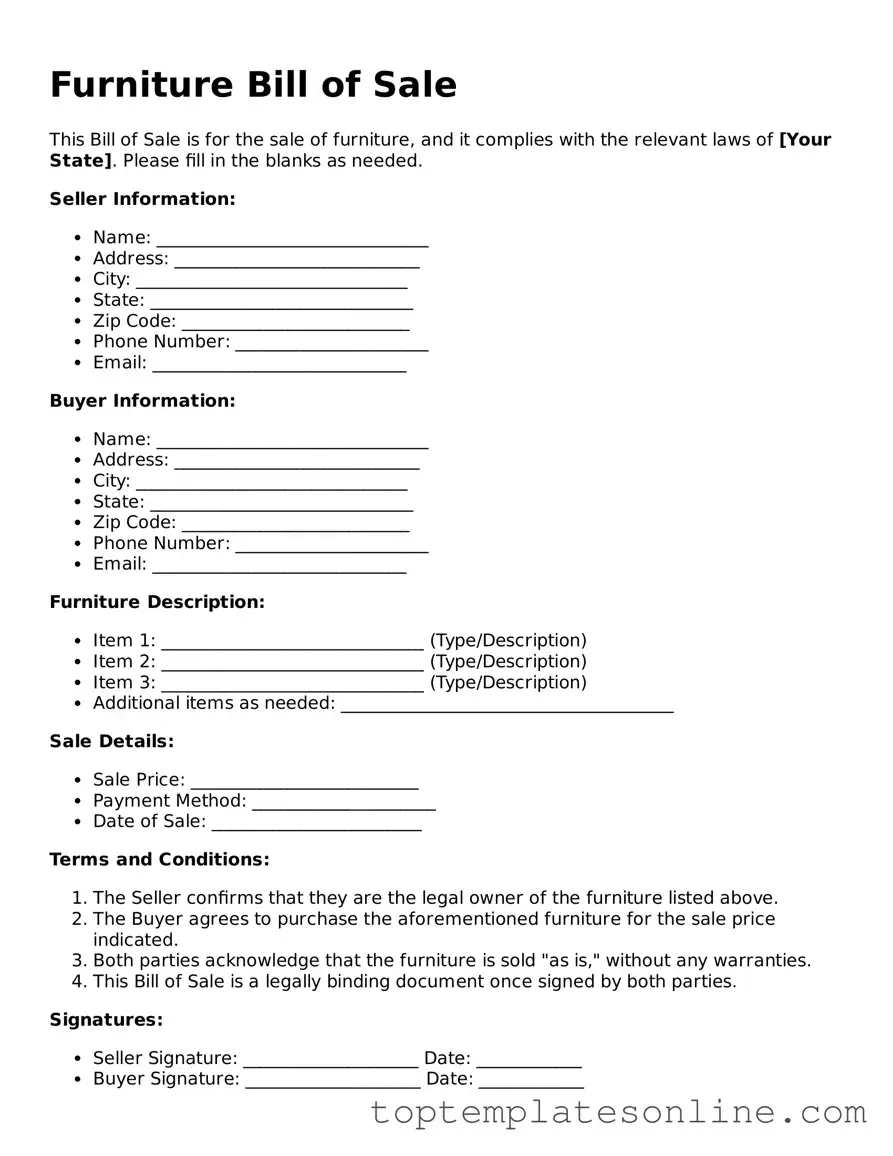Attorney-Approved Furniture Bill of Sale Form
A Furniture Bill of Sale form is a legal document that serves as proof of the sale and transfer of ownership of furniture from one party to another. This form outlines essential details such as the description of the furniture, the sale price, and the date of the transaction. Having a properly completed bill of sale can protect both the buyer and seller in case of disputes or misunderstandings in the future.
Customize Furniture Bill of Sale Here
